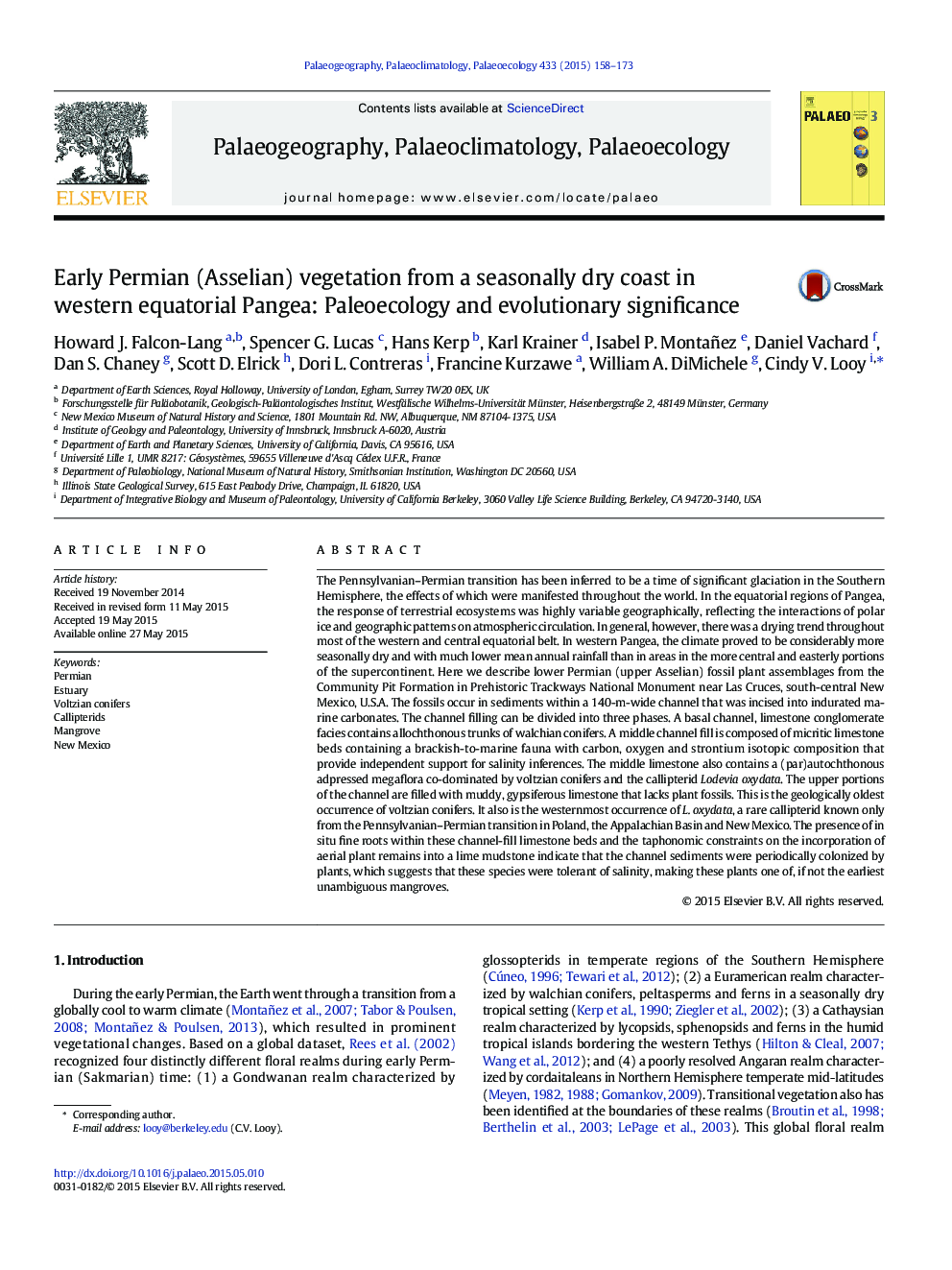| کد مقاله | کد نشریه | سال انتشار | مقاله انگلیسی | نسخه تمام متن |
|---|---|---|---|---|
| 4465926 | 1622157 | 2015 | 16 صفحه PDF | دانلود رایگان |

• An early Permian conifer-callipterid dominated megaflora from New Mexico is described.
• The flora includes the oldest occurrence of voltzian conifers.
• The flora grew on margins of a highly saline channel and was rooted within lime muds.
• The isotope composition of the associated fauna supports the salinity inferences.
• The growth habitat is unusual and suggests mangrove habits for one or more taxa.
The Pennsylvanian–Permian transition has been inferred to be a time of significant glaciation in the Southern Hemisphere, the effects of which were manifested throughout the world. In the equatorial regions of Pangea, the response of terrestrial ecosystems was highly variable geographically, reflecting the interactions of polar ice and geographic patterns on atmospheric circulation. In general, however, there was a drying trend throughout most of the western and central equatorial belt. In western Pangea, the climate proved to be considerably more seasonally dry and with much lower mean annual rainfall than in areas in the more central and easterly portions of the supercontinent. Here we describe lower Permian (upper Asselian) fossil plant assemblages from the Community Pit Formation in Prehistoric Trackways National Monument near Las Cruces, south-central New Mexico, U.S.A. The fossils occur in sediments within a 140-m-wide channel that was incised into indurated marine carbonates. The channel filling can be divided into three phases. A basal channel, limestone conglomerate facies contains allochthonous trunks of walchian conifers. A middle channel fill is composed of micritic limestone beds containing a brackish-to-marine fauna with carbon, oxygen and strontium isotopic composition that provide independent support for salinity inferences. The middle limestone also contains a (par)autochthonous adpressed megaflora co-dominated by voltzian conifers and the callipterid Lodevia oxydata. The upper portions of the channel are filled with muddy, gypsiferous limestone that lacks plant fossils. This is the geologically oldest occurrence of voltzian conifers. It also is the westernmost occurrence of L. oxydata, a rare callipterid known only from the Pennsylvanian–Permian transition in Poland, the Appalachian Basin and New Mexico. The presence of in situ fine roots within these channel-fill limestone beds and the taphonomic constraints on the incorporation of aerial plant remains into a lime mudstone indicate that the channel sediments were periodically colonized by plants, which suggests that these species were tolerant of salinity, making these plants one of, if not the earliest unambiguous mangroves.
Journal: Palaeogeography, Palaeoclimatology, Palaeoecology - Volume 433, 1 September 2015, Pages 158–173